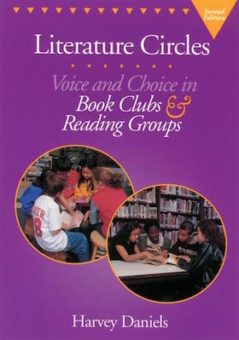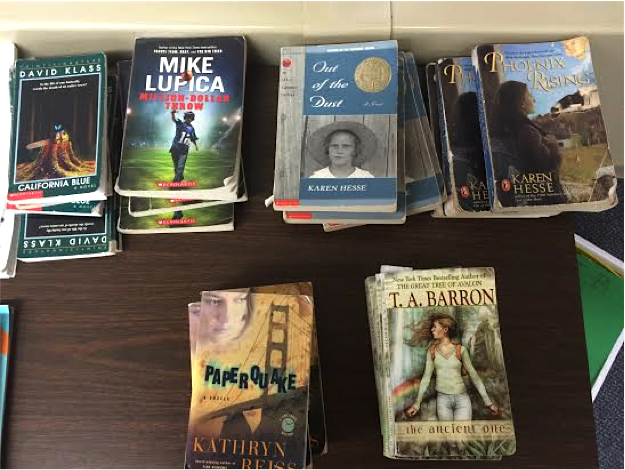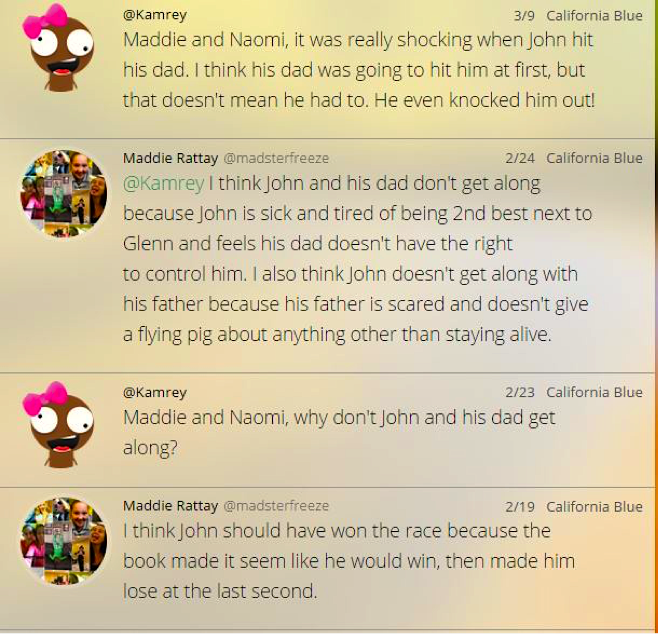Promote Book Talk with Online Literature Circles
A MiddleWeb Blog

Those of us who teach middle school students know that if we want those adolescent teens to read more, we have to give them a topic or topics they can feel connected to and are interested in learning more about.
If you add the amount of social media students are engaged in on a daily basis, the battle to get students interested in a good book can be a rather difficult challenge.
Over the last four years, I have tried to take an innovative approach to helping more of my students become engaged with books and reading. Harvey Daniels introduced literature circles through his popular book Literature Circles: Voice and Choice in Book Clubs and Reading Groups. Simply put, literature circles allow choice for students when reading and put students into smaller groups where each student has a job/role within the group.

When I finished reading Daniels’ book, I was still left wondering how I could continue having my students discuss books outside of class. I wanted to break down the walls and help my middle schoolers understand that learning doesn’t just take place inside the classroom. Furthermore, I wanted my students to engage in authentic conversations about books, similar to how adults might when they discuss books casually or within a book club.
In order to do this, I wanted to grab their attention where they tend to hang out the most… in social media. When I first began doing digital literature circles in my classroom, I was using a wonderful communication tool called Celly where I could make individual texting cells for students based on the book they were reading. Unfortunately, Celly is no longer available.
My alternative now is the learning management system called Schoology, which can also be downloaded as an application by students. The basic option for Schoology is free, which is all teachers need. Although Schoology was developed as a platform where teachers can create and manage classes, I can set it up so that the “classes” are actually book titles. Then I give all the students who are reading a specific title a code to get into that “class.”
I have used Schoology in the past as a classroom management tool, and it was easy to adapt for book discussions. More information can be found in this MiddleWeb blog post I co-authored with Troy Hicks that includes our methods and discussion guidelines. I use these same guidelines for our literature circle discussions.
Getting the conversations started
Getting students to discuss what they are reading inside the classroom using social media tools can be tricky. As Harvey Daniels has suggested, I assign roles for each group member reading the book. I have chosen the following roles for each of my digital groups:
- Discussion Director – Guides and leads discussion
- Summarizer – Title says it all
- Word Wizard – Vocabulary
- Connector – Real life connections
I focus on these four roles and rotate them on a weekly basis during our literature circle unit. In addition to the roles I have listed above, there is an Illustrator/Mapper role you can add if you have a group of five students. There are also other roles that are outlined in Harvey Daniels’ book.
My 7th grade students spend approximately four weeks on the unit. I start with an activity where students “go on a date” with potential books. During the activity, students rotate through the books I have laid out for them to choose from. Each student has a ½ sheet of paper and pencil. I then put a timer on the projector and each student needs to spend five minutes getting to know the book they’re examining. This is when I tell students to look at the cover, read the short book description, and try to read the first ten pages.
After browsing each of our book options, students write their top three choices on the sheet of paper and turn it in. Typically students get either the first or second choice. If I have students who are behind grade level, I try to have a few choices for them so they don’t feel so overwhelmed. If they chose a book that I may think is difficult for them, I will then have an individual conversation with them and decide if they’re ready for the challenge.
I feel literature circles give the students the power of choice, and that is crucial when it comes to getting middle school readers engaged.

When students are reading their book and fulfilling their roles in the literature circle, there are a few guidelines I outline for them for discussion that takes place outside of the classroom. They are:
- “Check in” on the discussion at least twice in a 24 hour period (NOT including your original question posting).
- Do your best to write as clearly and correctly as possible. (Text Talk is Allowed).
- In order to earn credit, you must participate while outside of school.
- DON’T PROCRASTINATE!
I stress the importance of these particular rules throughout the time students are working in their circles.
More about out-of-school discussions
By using Schoology, I can check in daily to see if they are following the guidelines. One thing I would like to highlight is that when students are outside of the classroom discussing the book, I allow them to use text talk. Allowing my students to do this gives them the freedom to write informally and to practice code switching. Also, the Schoology student environment has a Facebook feel, which helps them get more comfortable sharing their thoughts and ideas.
Below are some examples of student conversations outside of the classroom (these are from the old platform Celly). If students don’t have access to technology at home, they can always participate in out-of-class discussions by coming in before or after school to access a computer. During the unit I assign both formal and informal grades.
Next time: I’ll continue this focus on literature circles in my next article. Look for it here at MiddleWeb at the beginning of December. I’ll discuss grading and extension assignments that I have students complete to help promote literacy in my school. Also, you can find more information on digital literature circles in my book Create, Compose, Connect. Happy Thanksgiving!

































I feel this is for older grades.